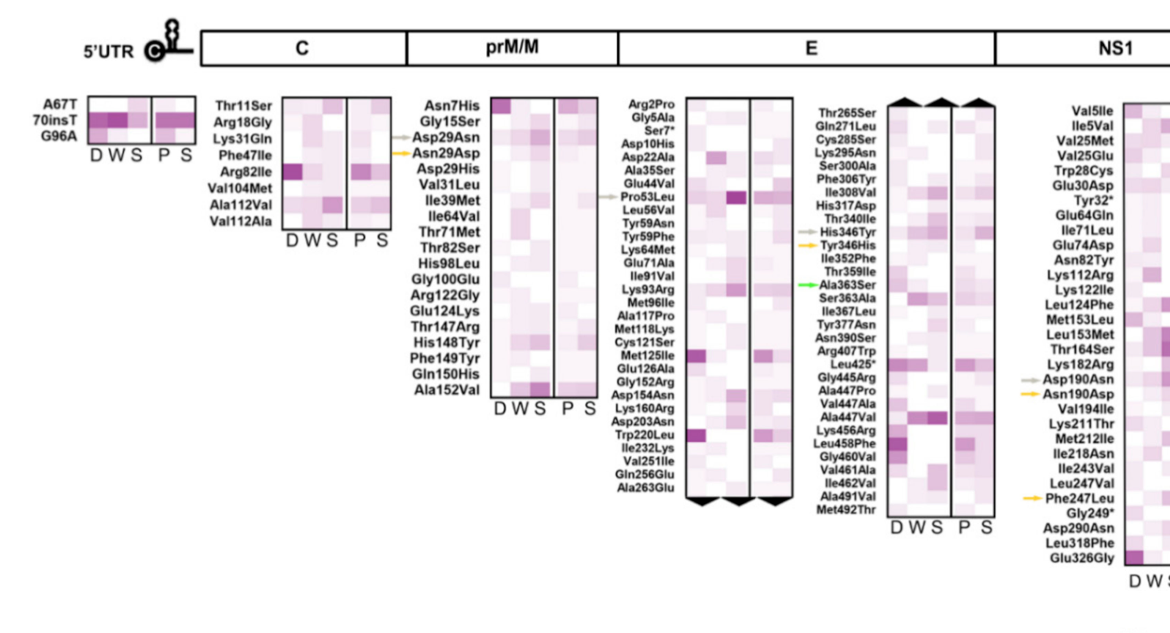Viruses, 2021.
Authors: Torres MC, Lima de Mendonça MC, Damasceno dos Santos Rodrigues C, Fonseca V, Ribeiro MS, Brandao AP, Venancio da Cunha R, Dias AI, Santos Vilas Boas L, Felix AC, Alves Pereira M, de Oliveira Pinto LM, Sakuntabhai A, Bispo de Filippis AM, on behalf of ZikAction Consortium.
Journal: Viruses,13(2), 349: (2021)
Abstract
Intrahost genetic diversity is thought to facilitate arbovirus adaptation to changing environments and hosts, and it might also be linked to viral pathogenesis. Dengue virus serotype 2 (DENV-2) has circulated in Brazil since 1990 and is associated with severe disease and explosive outbreaks. Intending to shed light on the viral determinants for severe dengue pathogenesis, we sought to analyze the DENV-2 intrahost genetic diversity in 68 patient cases clinically classified as dengue fever (n = 31), dengue with warning signs (n = 19), and severe dengue (n = 18). Unlike previous DENV intrahost diversity studies whose approaches employed PCR, here we performed viral whole-genome deep sequencing from clinical samples with an amplicon-free approach, representing the real intrahost diversity scenario. Striking differences were detected in the viral population structure between the three clinical categories, which appear to be driven mainly by different infection times and selection pressures, rather than being linked with the clinical outcome itself. Diversity in the NS2B gene, however, showed to be constrained, irrespective of clinical outcome and infection time. Finally, 385 non-synonymous intrahost single-nucleotide variants located along the viral polyprotein, plus variants located in the untranslated regions, were consistently identified among the samples. Of them, 124 were exclusively or highly detected among cases with warning signs and among severe cases. However, there was no variant that by itself appeared to characterize the cases of greater severity, either due to its low intrahost frequency or the conservative effect on amino acid substitution. Although further studies are necessary to determine their real effect on viral proteins, this heightens the possibility of epistatic interactions. The present analysis represents an initial effort to correlate DENV-2 genetic diversity to its pathogenic potential and thus contribute to understanding the virus’s dynamics within its human host.

